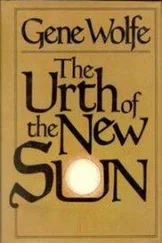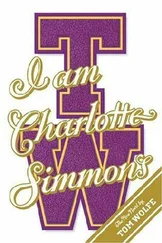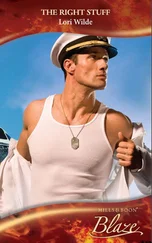Tom Wolfe - The Right Stuff
Здесь есть возможность читать онлайн «Tom Wolfe - The Right Stuff» весь текст электронной книги совершенно бесплатно (целиком полную версию без сокращений). В некоторых случаях можно слушать аудио, скачать через торрент в формате fb2 и присутствует краткое содержание. Жанр: Современная проза, на английском языке. Описание произведения, (предисловие) а так же отзывы посетителей доступны на портале библиотеки ЛибКат.
- Название:The Right Stuff
- Автор:
- Жанр:
- Год:неизвестен
- ISBN:нет данных
- Рейтинг книги:3 / 5. Голосов: 1
-
Избранное:Добавить в избранное
- Отзывы:
-
Ваша оценка:
- 60
- 1
- 2
- 3
- 4
- 5
The Right Stuff: краткое содержание, описание и аннотация
Предлагаем к чтению аннотацию, описание, краткое содержание или предисловие (зависит от того, что написал сам автор книги «The Right Stuff»). Если вы не нашли необходимую информацию о книге — напишите в комментариях, мы постараемся отыскать её.
The Right Stuff — читать онлайн бесплатно полную книгу (весь текст) целиком
Ниже представлен текст книги, разбитый по страницам. Система сохранения места последней прочитанной страницы, позволяет с удобством читать онлайн бесплатно книгу «The Right Stuff», без необходимости каждый раз заново искать на чём Вы остановились. Поставьте закладку, и сможете в любой момент перейти на страницу, на которой закончили чтение.
Интервал:
Закладка:
The goal in Project Mercury, as in every important new flight project, was to be the pilot assigned to make the first flight. In flight test that meant your superiors looked upon you as the man who had the right stuff to challenge the unknowns. In Project Mercury the first flight would also be the most historic flight. They had been told that the first flight would be suborbital. There might be as many as ten or eleven suborbital flights, going to an altitude of about one hundred miles, fifty miles above the commonly accepted boundary line between the earth's atmosphere and space. These flights would not go into orbit, because the rocket they would be using, the Redstone, could not generate enough power to take a capsule to orbital speed, which would be about 18,000 miles per hour. The capsule would go up and come down in a big arc, like an artillery shell's. As it came over the top of the arc, the astronaut would experience about five minutes of weightlessness. These suborbital flights were scheduled to begin in mid-1960, and all seven pilots would get a crack at them.
Other men would no doubt go farther into space, into earth orbit and beyond. But they, in turn, would be chosen from the first men to fly suborbitally; so the first astronaut would be the one the world remembered. When a man realized something like that, there was no use being shy about the opportunity he had. Glenn had not gotten this far in his career by standing still in a saintly fashion and waiting for his halo to be noticed. When he reached Korea, flying strafing and bombing missions in support of Marine ground troops, he realized that the biggest accolade was being assigned to Air Force fighter squadrons, on loan (like Schirra), for air-to-air combat up at the Yalu River. So he had gone after that assignment and had gotten it and had shot down three MiGs during the last few days of the war. As soon as the war ended, he realized that flight test was the hot new arena and had gone straight to his superiors and asked to be assigned to the Navy's Patuxent River Test Pilot School, and they sent him there. He had been in flight test barely three years when he dreamed up the F8U transcontinental run. He dreamed it up himself, as a major in the Marines! Although everyone knew it was possible, no one had ever made a sustained coast-to-coast flight at an average speed of greater than Mach 1. Glenn developed the whole scheme, the aerial rendezvous with three different air refueling tankers, the way he would dive down to 22,000 feet to meet them, the whole thing. He pulled it off on July 16, 1957, flying from Los Angeles to Floyd Bennett Field in New York, in three hours and twenty-three minutes. The word was that there were some test pilots who were put out because he got the assignment. They seemed to think they had done the major test work on the F8U, and so forth and so on. But it was his idea! He got it launched! If he hadn't put himself forward, it wouldn't have happened at all. Last year, 1958, it was obvious to him that all the services were working on the problems of manned space flight. There was no Project Mercury yet, and no one knew who would be running the show when a manned program began. All he knew was that it was not likely to be the Marines but he wanted to play a part in it. So he had himself assigned to the Navy Bureau of Aeronautics. He volunteered for runs on the Navy's human centrifuge machine at Johnsville, Pennsylvania, exploring the high g-forces associated with rocket flight. By March of this year, 1959, just a month before the seven of them were selected as astronauts, he had been at the McDonnell Aircraft plant in St. Louis as a representative of the Bureau of Aeronautics on a NASA Mockup Review Board, reviewing progress of the manufacture of the Mercury capsule. He didn't know just how the seven of them were selected… but obviously all that hadn't hurt his chances.
And now the ante had been raised once more, and he was after nothing short of being the first man to go into space. NASA would have to beat the Russians to it, of course, for him or any other American to be first. But that was one of the things that made it exhilarating, exhilarating enough even to endure this sweaty pounding over a salty pine-tag circular driveway in Tidewater, Virginia. There was the same sort of esprit —usually called patriotism but better described as joie de combat —that had existed during the Second World War and, among pilots (and practically no one else), during the Korean War. Project Mercury was officially a civilian undertaking. But it struck Glenn as being like a new branch of the armed services. All seven of them were still in the military, drawing military pay, even though they wore civilian clothes. There was a warlike urgency and priority about the whole enterprise. And in this new branch of the military no one outranked you . It was almost too good to be true.
On the organization chart the seven of them had superiors. They reported to Robert Gilruth, the head of the new Space Task Group, who was a subordinate of Hugh Dryden, the deputy administrator of NASA. Gilruth was a superb engineer and a fine man; he had literally written the book on the handling characteristics of aircraft, the first scientific treatise on the subject, "Requirements for Satisfactory Flying Qualities of Airplanes," NACA Report No. 755, 1937, which had become a classic. He was a big, bald, shy man with a reedy voice. Most recently he had been head of the NACA Pilotless Aircraft Research Division, which had experimented with unmanned rockets. Gilruth was not used to marching the troops and certainly not a group of ambitious pilots. He was no Vince Lombardi. He was a genius among engineers, but he was not the type to take seven colossal stars who were suddenly the most famous pilots in America and mold them into Bob Gilruth's Astroteam.
They were so famous, so revered, so lavishly fussed and worried over at all times that they were without peers in this new branch of the military. Everywhere they went in their travels people stopped what they were doing and gave them a certain look of awe and sympathy. Sympathy… because our rockets all blow up . It was a nice, friendly, warm look, all right, and yet it was strange. It was a sort of glistening smile with tears and joy suffusing it; both tears and joy. In fact, it was an ancient look, from the primordial past, never seen in America before. It was the smile of homage and astonishment—at such bravery!—that had been given to single-combat warriors, in advance, on account, before the fact, since time was.
Well… Glenn was ready; he was ready for election; he was ready to be the first to go into the heavens when that debt of homage and honor and glistening faces came due.
One of the people who beamed that look at them with a sincere devotion was a Washington lawyer named Leo DeOrsey. Walter Bonney, the NASA public affairs officer who had run the press conference, had seen the frenzy of publicity building up around the seven men and concluded that they needed some expert help in their new role as celebrities. He approached DeOrsey. DeOrsey was a tax lawyer. Harry Truman had once considered making him head of the Internal Revenue Service. He had represented many show-business celebrities, including President Eisenhower's friend Arthur Godfrey. So the seven of them wound up having dinner with DeOrsey in a private room at the Columbia Country Club outside of Washington. DeOrsey was an affable gentleman with a little round pot belly. He had terrific clothes. He put on a long face and related how he had been approached by Bonney. He said he was willing to represent them.
"I insist on only two conditions," he said.
Glenn thought to himself, "Well, here it comes."
"One," said DeOrsey, "I will accept no fee. Two, I will not be reimbursed for expenses."
Читать дальшеИнтервал:
Закладка:
Похожие книги на «The Right Stuff»
Представляем Вашему вниманию похожие книги на «The Right Stuff» списком для выбора. Мы отобрали схожую по названию и смыслу литературу в надежде предоставить читателям больше вариантов отыскать новые, интересные, ещё непрочитанные произведения.
Обсуждение, отзывы о книге «The Right Stuff» и просто собственные мнения читателей. Оставьте ваши комментарии, напишите, что Вы думаете о произведении, его смысле или главных героях. Укажите что конкретно понравилось, а что нет, и почему Вы так считаете.











